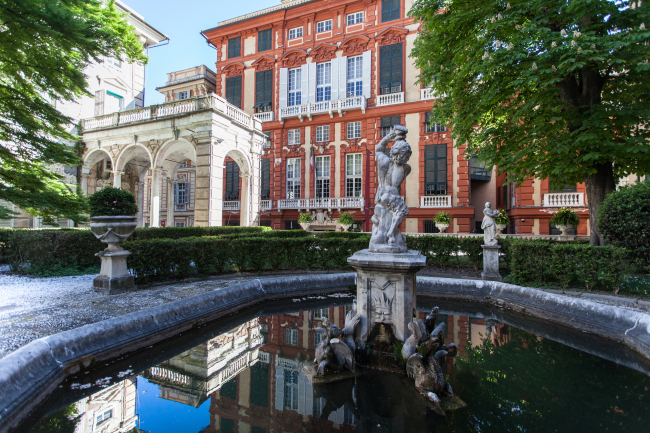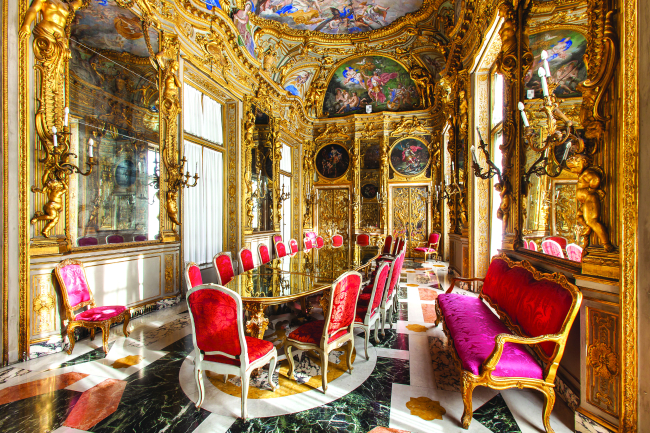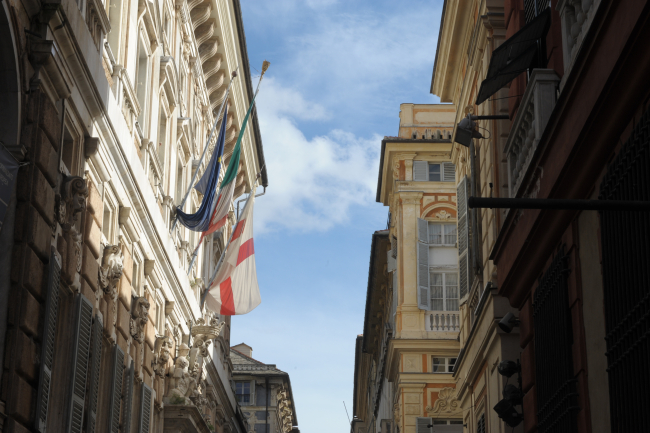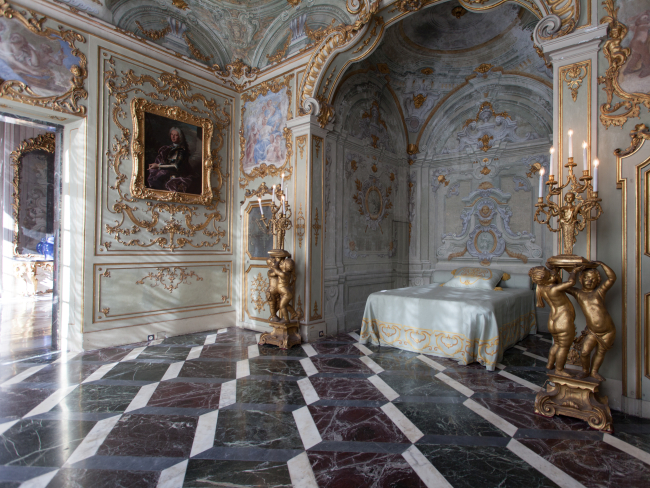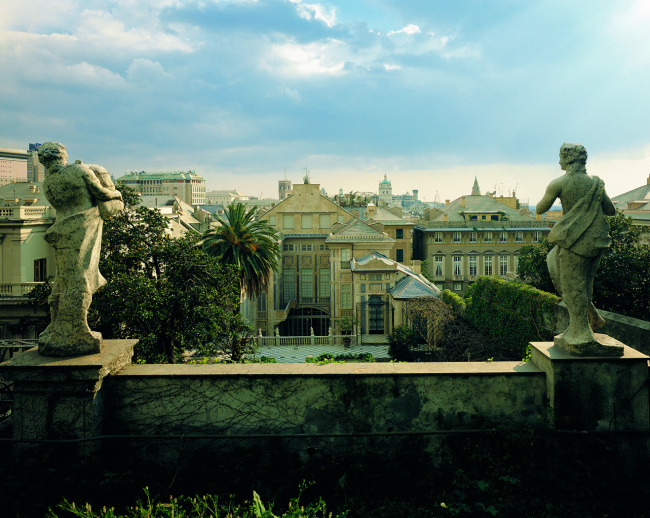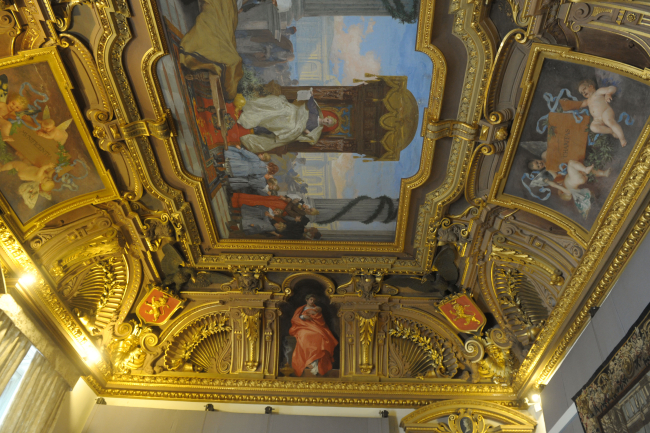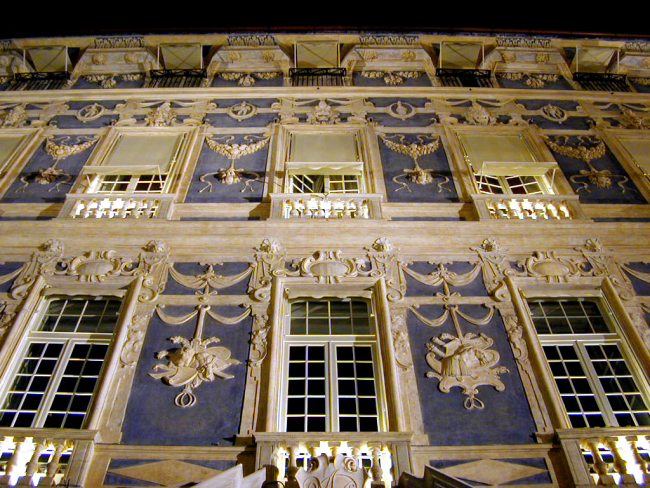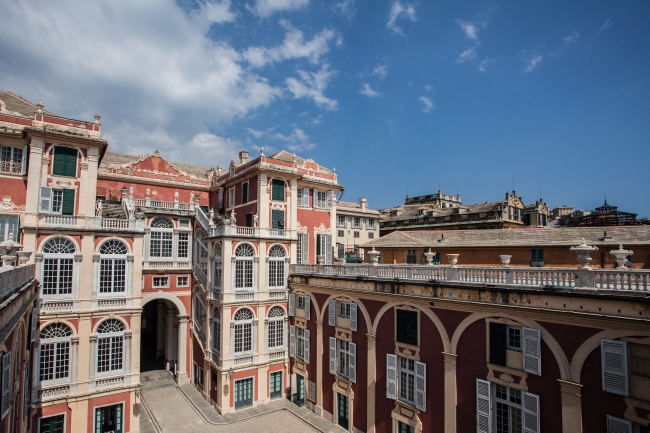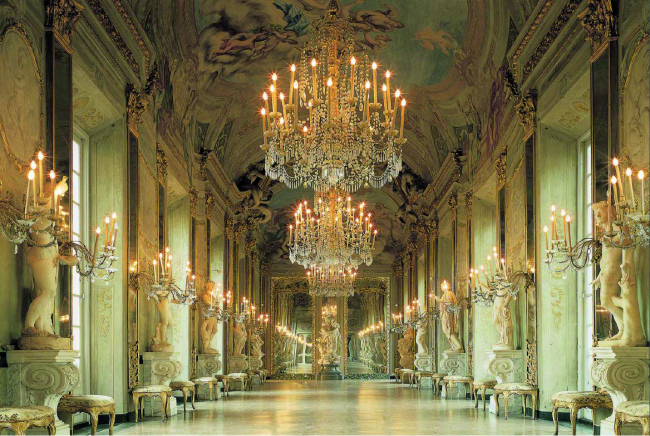Breathe in the noble atmosphere of 42 Unesco World Heritage Palaces
Between the XVIth and the XVIIth century, in the extraordinary years leading from the Renaissance to the Baroque era, the noble Genoese families decided to have their new stately homes built all along the new street called Strada Nuova and to renew the rich existing palaces they already possessed inside the historical centre of the city: magnificent facades painted or decorated with stuccoes and marble, outstanding entrance halls, wonderful courtyards and gardens with fountains and nymphs, huge frescoed halls on the inside, sumptuous furniture, precious art and paintings collections; many “little palaces” inhabited by rich bourgeois.
Sumptuous palaces built by the most powerful and rich Genoese families during the Golden Century (between the XVIth and the XVIIth century), which have been inscribed in the UNESCO World Heritage sites since 2006.
It’s a network of private dwellings served a unique representative role through their inclusion in the "Rolli", an official list of public lodging palaces for state visits. Kings, princes, diplomats and ambassadors - all guests of State of the Republic of Genoa - once found hospitality in these residences. Luxurious, elegantly decorated dwellings did not fail to catch the eye of refined artists such as the great Flemish painter Rubens, who in the early 1600s published a collection of drawings of the palaces, which he regarded as model examples of noble dwellings.
Unesco World Heritage site includes 42 palaces; the area featured on the Unesco list also extends to the part of the historic centre that runs through Via Lomellini, Piazza Fossatello and Via San Luca to Piazza Banchi, the mercantile heart of the old town: along this stretch lie some of the most important examples of the Palazzi dei Rolli, woven in the modern age into the mediaeval fabric of the city.
The complete name of the Unesco site is “The New Streets and the system of the Rolli Palaces”, because, in addition to Via Garibaldi, many palaces stand along Via Balbi and via Cairoli (Via Nuovissima), and were built on public initiative between 1500 and 1700 (and sometimes on private initiative, as far as Balbi’s family was concerned) to provide the city with wider roads and, above all, prestigious representative paths. To this day, the Palazzi dei Rolli still partly belong to private owners, while some of the buildings today house banks or offices.
Every year Genoa celebrates its Rolli Palaces, Unesco World Heritage, with the “Rolli Days” event. In 2018, next "Rolli days" events are foreseen for 19th and 20th May and 13th and 14th October.
Tourist services to live and discover the city can be purchased online or at IAT Tourist Offices.




